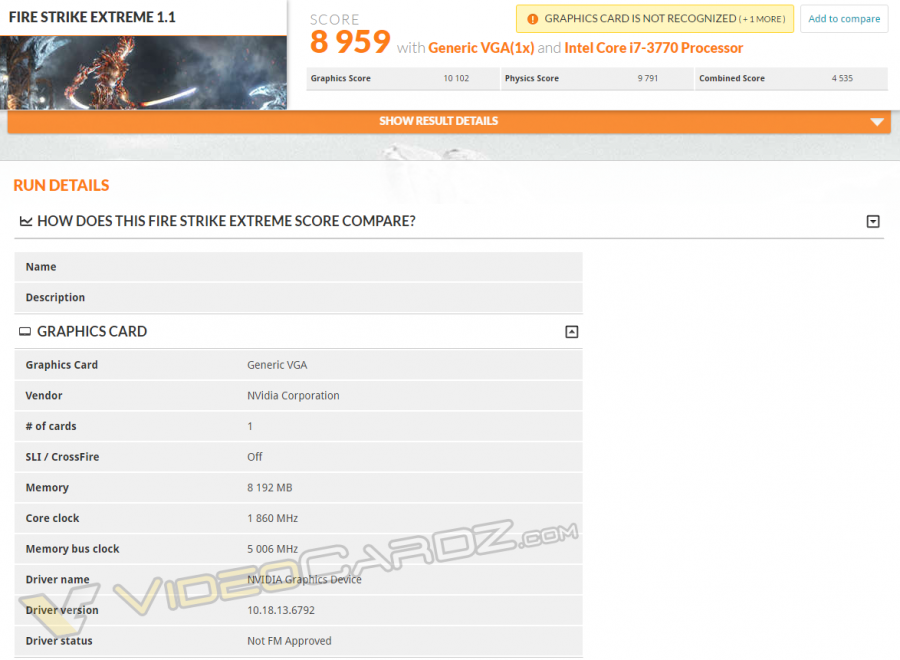This may interest you: 3DMark benchmarks of the GTX 1080!
First NVIDIA GeForce GTX 1080 3DMark Benchmarks
http://videocardz.com/59558/nvidia-geforce-gtx-1080-3dmark-benchmarks
I think the most interesting detail about GTX 1080 is the new memory. NVIDIA has finally used 8GB ram for its flagship card. It’s no longer an exclusive to mobile solutions. Additionally, the GDDR5X modules are clocked at 2500 MHz (which is shown as 5000+ MHz in 3DMark). However the effective clock is 10000 MHz, which means the bandwidth is somewhere around 320 GB/s (assuming it’s 256-bit wide).
On the GPU side we have a huge improvement in terms of frequencies. It is said that GTX 1080 can boost up to 1.8 GHz, with base clock around 1.6 GHz. At the time of writing we are not able to confirm the exact reference clock. For such reason I decided to avoid making comparison charts, so this post will essentially tell you what GTX 1080 is capable of and nothing more.
3DMark11 Performance preset is rendered at 1280×720 resolution. GeForce GTX 1080 scores 27683 points, which is still above overclocked GM200 cards (~23-25k). Worth noting 3DMark11 is not showing correct GPU clocks, however the new driver already supports GTX 1080 by its name.

The second benchmark we have is from FireStrike Extreme, which as you probably already know is rendered at 2560×1440 resolution. This is actually the first benchmark where you will see 1.860 GHz clock. In this scenario GTX 1080 is faster than typical overclocked GTX 980 Ti (~8700 points). However if we compare it GTX 980 Ti running at almost the same frequency (1.8GHz with LN2 cooling), GTX 1080 is actually much slower clock to clock (link).

Please excuse my bad English.
Currently gaming on a PC with an i5-4670k@stock (for now), 16Gb RAM 1600 MHz and a GTX 1070
Steam / Live / NNID : jonxiquet Add me if you want, but I'm a single player gamer.


















